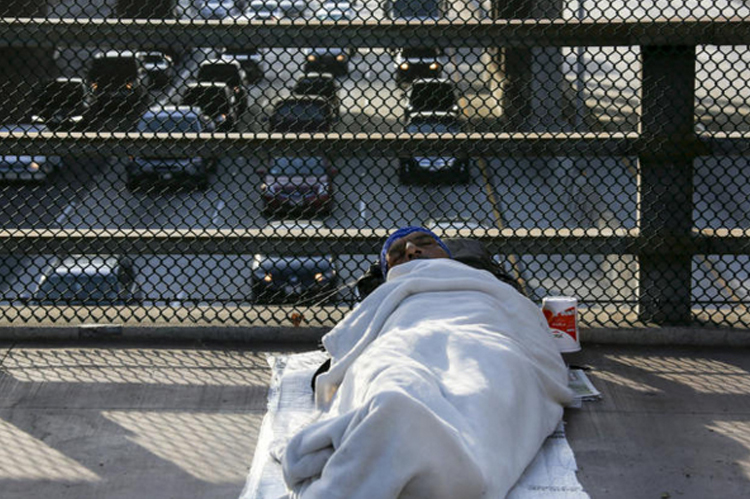Community members got their first chance Wednesday to weigh in on new plans by the city and county of Los Angeles to address the region’s growing problem with homelessness.
During two public hearings, advocates for the homeless praised the proposals while others pointed to gaps in the plans, including a lack of strategies to help women who are forced out of their homes because of domestic violence.
The county’s draft, released last week, proposed spending $150 million in county and state money on 47 strategies to deal with the homeless. It recommended that 12 of the ideas be undertaken this year.
Two other key measures call for allocating 35% of federal housing vouchers that become available in the county to people who are chronically homeless and spending $11 million to increase the supply of short-term shelter for people coming out of county institutions such as jails and hospitals.
More than 44,000 people were found to be homeless throughout Los Angeles County in last year’s count, representing a 12% increase from 2013. The number of people living on the streets in tents, makeshift encampments and vehicles increased 85% during that period.
In the city report, also released last week, budget analysts made a number of suggestions to deal with the homeless in Los Angeles. They estimated that funding those plans would cost more than $1.85 billion over a decade.
At the hearings, advocates for the homeless pointed to a lack of strategies in the city and county plans to address the needs of domestic violence survivors.
“The comprehensive homeless strategy is not comprehensive at all when it comes down to domestic violence victims,” said Freddie Black, director of clinical services and programs at 1736 Family Crisis Center, referring to the city plan. “In fact, it completely fails to address the crisis.”
City Administrative Officer Miguel Santana, an author of the report, said researchers did not delve very far into criminalization because the City Council already had discussions about those issues.
“This report is really focused on getting people into housing,” Councilman Marqueece Harris-Dawson said. “You can’t be criminalized for being on the street if you’re not on the street.”
The county plan, however, recommended taking a regional approach to decriminalizing homelessness, including a protocol for clearing out street encampments. It left the details of those proposals to be worked out later.
A number of advocates also called for new strategies to increase the supply of affordable housing and prevent people from being evicted without good cause.
Jim Chud, a board member of the National AIDS Housing Coalition and longtime survivor of HIV infection, said the county and city should consider requiring developers to set aside a certain number of affordable housing units, as West Hollywood and Santa Monica do.
“When we drive up and down any of the major streets in L.A. County, there are thousands of apartments under construction right now,” he said, “and not one of those big buildings has any requirement to build any affordable units.”
Both plans, however, also garnered some praise.
The United Way of Greater Los Angeles released a statement calling the proposals “comprehensive, thoughtful and refreshingly honest in talking about the issue of homelessness, its funding and solutions.”
“This is a historic moment in having both the city and county working together to end homelessness in our region,” it said.
City and county officials are expected to vote on final versions of the plans next month.

